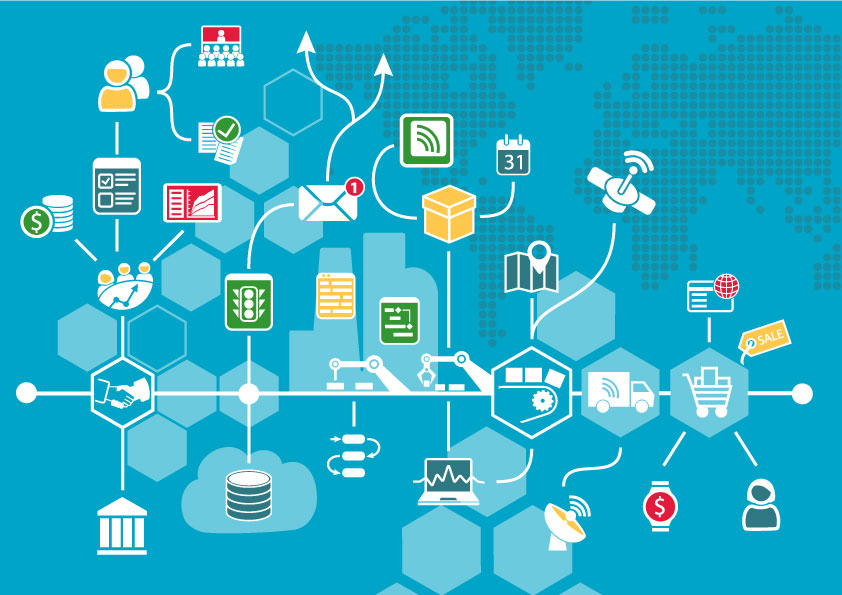Life After Enterprise Automation – 6 Exciting Breakthroughs Your Team Will Experience
So you’ve decided to make some changes in your office. You’ve invested in something called Enterprise Workflow Automation (which combines tools like ...

So you’ve decided to make some changes in your office. You’ve invested in something called Enterprise Automation (which combines technologies like Document Management Software and Robotic Process Automation), and you’ve got a team working to revamp your processes, making them better and automating tasks where possible.
Maybe you’re excited and a little bit nervous about how automation is going to transform your job and your office as a whole. We get it. Change can be a scary thing. To help you carry some positive vibes through this process, today we’re going to look at 6 exciting changes that you’ll experience once the transformation is complete.
So, buckle up and get ready for a trip through time – to your future!
There are certain tasks in your office that need to get done, even if they’re tedious or repetitive. They’re inescapable. Well, sort of... Unless you have automation. With enterprise workflow automation, you can stop wasting time and energy on tedious, manual tasks.
Robotic process automation tools can automate tasks, processes, exceptions, and user interactions to improve productivity, improve quality, improve response times, reduce costs, reduce labor, and create new opportunities for growth. Yes, all of that is possible with enterprise workflow automation!
In fact, some companies using DocuPhase have been able to eliminate Administrative Assistants’ tasks and re-purpose those team members, allowing them to do more rewarding work. In short, process automation allows your to work up to your full potential!
Whether you want to call it Document Management Software or Enterprise Content Management, storing your data and documents in the cloud means that information and processes are accessible from any location, as long as you’re connected to the internet. Everything you need is right there, at your fingertips.
Additionally, the automation components of your platform never take a break or clock out for the day. There is no need to schedule breaks or apply employee benefits, no HR issues, and no complaints. And just like that, you’ve got a full-time assistant there to help you out. Imagine how much easier it will be for you to get your work done!
Now, this one depends on the industry you’re in, but for some, it’s a game changer. Certain industries and departments face higher compliance risks. Audits are expected, and they can be a drain on resources. If you’re in an industry with rigid compliance requirements, you’ll find that audits are much easier to comply with when you have stellar reporting tools and easy access to electronic documents.
When the auditors come knocking, you’ll be able to show them a full audit trail of each of your documents and processes, and you’ll be able to perform a quick search to connect them with the records they need.
When paper-based companies experience growth in demand and customer base, they hire more people to take on the additional work. There’s simply no other way to manage the daily demands. In contrast, when automation-based companies grow, their team members are able to continue operating as normal, as the workflow automation software takes on a lot of the extra workload. There are no mounds of paperwork to be processed, tediously, one piece at a time, as your team builds up their fingertip callouses from all the 10-key data entry. No way!
You and your team don’t need to fear growth. After all, business growth should be a good thing for all of us, right? Enterprise workflow automation will relieve the pressure of an increased customer base, and let you and your team keep right on rocking.
As we’ve already established, you’re going to see the benefits of enterprise automation firsthand, but the perks of workflow automation software extend beyond your company’s internal operations. They also affect your customers and clients.
Tools like web-based forms, user portals, and automated feedback will help you enhance communication, connectivity, and customer satisfaction. Customer service is key, and excellent customer service is made easier with enterprise automation.
With enterprise automation, you can choose where you’ll start deploying the tools within your organization. Maybe you want to begin with simplest processes, or maybe with the department/process that you feel needs the most immediate attention. Either way, our platform is built to land and expand. This means that once it’s established within your HR department or Accounting department, you can use similar tools to automate your other departments, one by one.
As an example, one of DocuPhase’s specialties is Accounting Automation, which is the application of robotic process automation tools to accounting-specific documents and processes.
Robotic accounting automation includes these kinds of capabilities: AP invoice receiving, AP data entry, three-way matching, automated GL coding, exception processing, expense report processing, approval routing and notifications, journal entry approval and tracking, and customer and vendor process notifications. It’s common for new DocuPhase customers to begin with Accounting Automation and then later expand the platform into the rest of their operations. This way, the whole team benefits, and more and more people within your company will get to experience the changes listed above.
Now that you know the inside scoop on enterprise workflow automation, click here to sign up for a free demo of our platform. And don’t forget to subscribe to our blog for more info!

So you’ve decided to make some changes in your office. You’ve invested in something called Enterprise Workflow Automation (which combines tools like ...

The goal of any business is to grow – to increase revenue and profits, all while keeping your customers and your employees happy. This is the...

If you work within a government-funded organization, you know how rigid the budget can be. When budget cuts come down from the top – whether that’s...